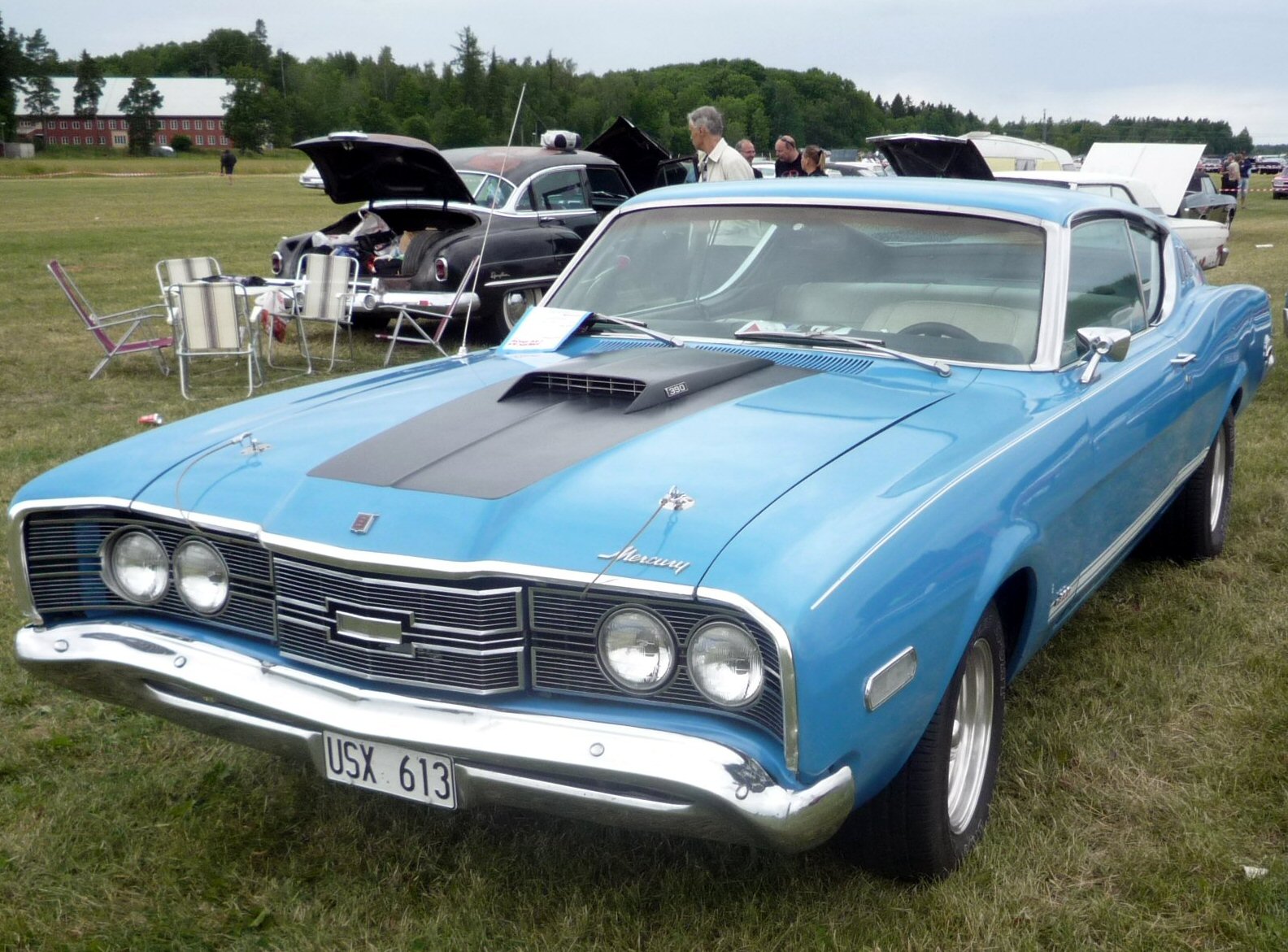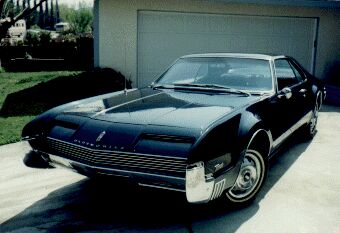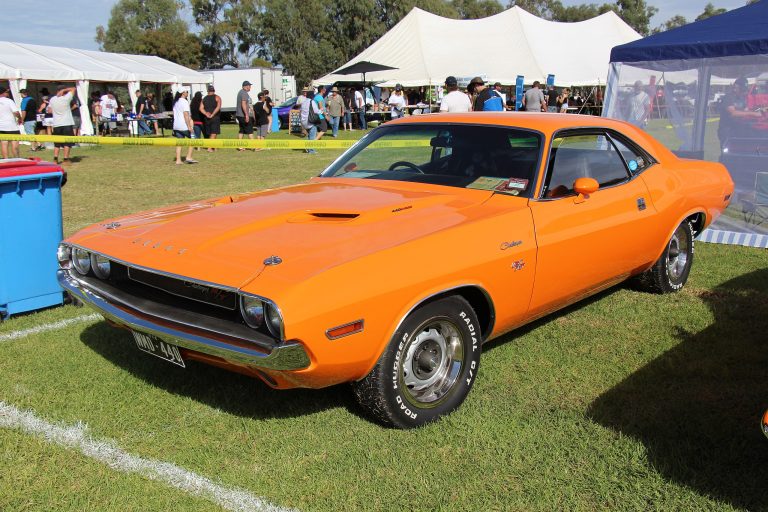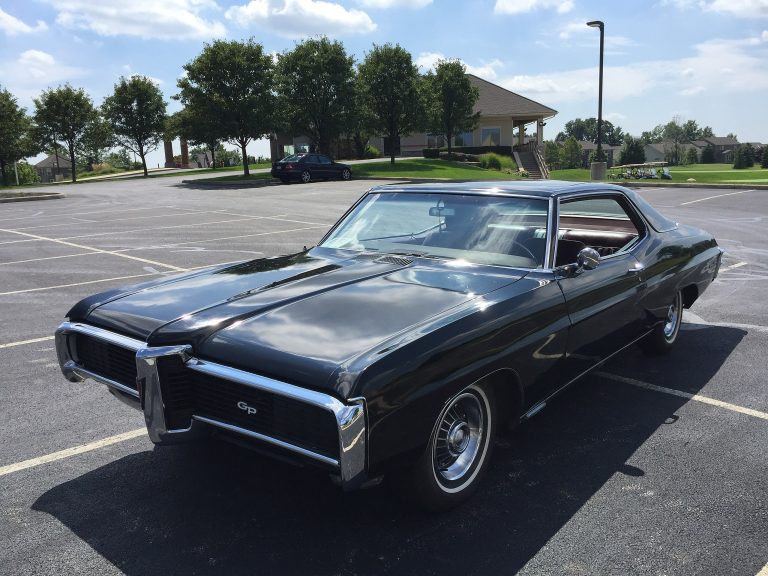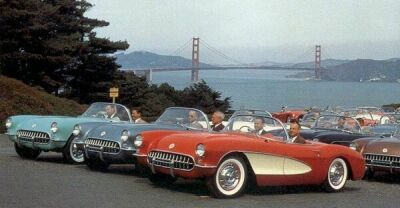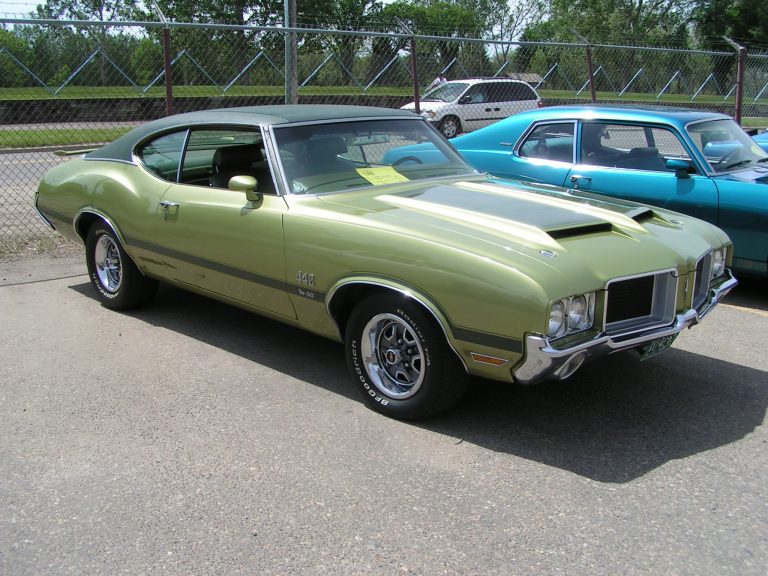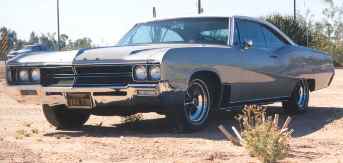Mercury Cyclone & Mercury Comet

Meet Chandler
Chandler has a bachelors and masters degree in history as well as a passion for classics and muscle cars. His education and historical knowledge makes him skilled at crafting highly detailed articles about America’s muscle cars and automotive history. His love of muscle cars is undeniable, with him seeking them out at every opportunity during his visits to auto shows and car meets. Chandler’s knowledge and enthusiasm towards automotive history make him a great asset to the Muscle Car Club community.
Introduced in 1960, the Mercury Comet was one of the most consistent performers of the Ford lineup for many years until its demise in 1977. From 1964–1971, Mercury produced the high performance version of the Comet, which they branded the Mercury Cyclone. The Cyclone got larger V8 engines and increased performance, and was a very formidable muscle car.
The Mercury Comet and Mercury Cyclone offered outstanding value for the time, being priced lower than most other cars of the era. Mercury also brought out a few special versions of the Cyclone, namely the Cyclone GT, Cyclone CJ (Cobra Jet), and Cyclone Spoiler II. Once the Cyclone bit the dust after 1971, the Comet continued for a few years as one of the few remaining ‘70s “muscle” cars. The Comet and especially Cyclone are very fondly remembered today. Due to their high production volume of the Comet, they are still widely available on the collector’s market. The Cyclones are a bit more rare, but can still be found widely.
Mercury Cyclone & Mercury Comet Overview
The Mercury Comet lasted from 1960–1977, while the Mercury Cyclone only lasted from 1964–1971. The Comet spanned a total of five generations but did not appear for the 1970 model year, while the Cyclone extended a total of four generations. Compared with the Mercury Cougar which Ford based on the Ford Mustang, Mercury based the Comet on the Ford Falcon.
Originally, Mercury sold the car as just the Comet, before officially calling it the Mercury Comet from 1962-on. Ford had intended the car to be a part of the short-lived Edsel line, but when Edsel folded in 1959 Ford decided to have Lincoln-Mercury dealers sell it instead. The Comet was immediately a success upon its debut, selling more than 115,000 models in its first year alone. For 1966, Mercury sold the 1 millionth Comet – quite a feat in just seven years.
In 1962, Mercury started selling the Comet S-22, which was a high performance variant. In
1964, Mercury discontinued the S-22 and replaced it with the Comet Cyclone. Mercury gave the Cyclone the same K-code 289 cid V8 engine as the Mustang, where it made a solid 271 horsepower. By the late-1960s, the Mercury Cyclone was one of the most powerful muscle cars on the market, especially when ordered with the 427, 428, or 429 big-block V8 engines.
From 1968–1971, Mercury sold the Cyclone as its own standalone model, and in 1970 the Comet did not appear. Unfortunately, with the coming emissions cleanse of the 1970s, Mercury dropped the Cyclone in 1972 and brought back the Comet nameplate. The Comet lasted until 1977 and continued to sell relatively well. Today, there are lots of Comets and Cyclones available on the collector’s market, a testament to its popularity and high production total.
1960-1963 Mercury Comet
The first generation of the Mercury Comet lasted from 1960–1963. From 1960–1961, Mercury sold it as the Comet, but in 1962 it became the Mercury Comet. The name came from the burgeoning Space Race between America and the Soviet Union, and reflected America’s fascination with all things outer space. Mercury marketed the Comet as a new “fashionable” “right size” compact that was still fit for a family. They described it as an “all-in-one car” that was “easy-to-own” and an “economy” car.
The wheelbase sat at 114 inches, which Mercury said was “just right for sure-footed stability and a feeling of solid security, even at turnpike speeds.” It was two-feet shorter than “conventional cars,” but still had ample room on the 26 cid “spacious luggage deck… [to hold] enough duffle for a weekend family cruise!” They called it a “family-sized compact.”
Mercury made the Comet available as either a four-door or two-door sedan, and they priced it low enough to be family friendly. Making the Comet distinct was the slanted tailights and rear fins, as well as the unique grille. In 1961, Mercury introduced the S-22 coupe. Only available as a two-door, they introduced it midyear and gave it many upgraded interior goodies.
For the 1962 Mercury Comet, the tail lights became rounded and they added more sound insulation. In addition to the base Comet and Special S-22, there was also the mid-level Comet Caliente.
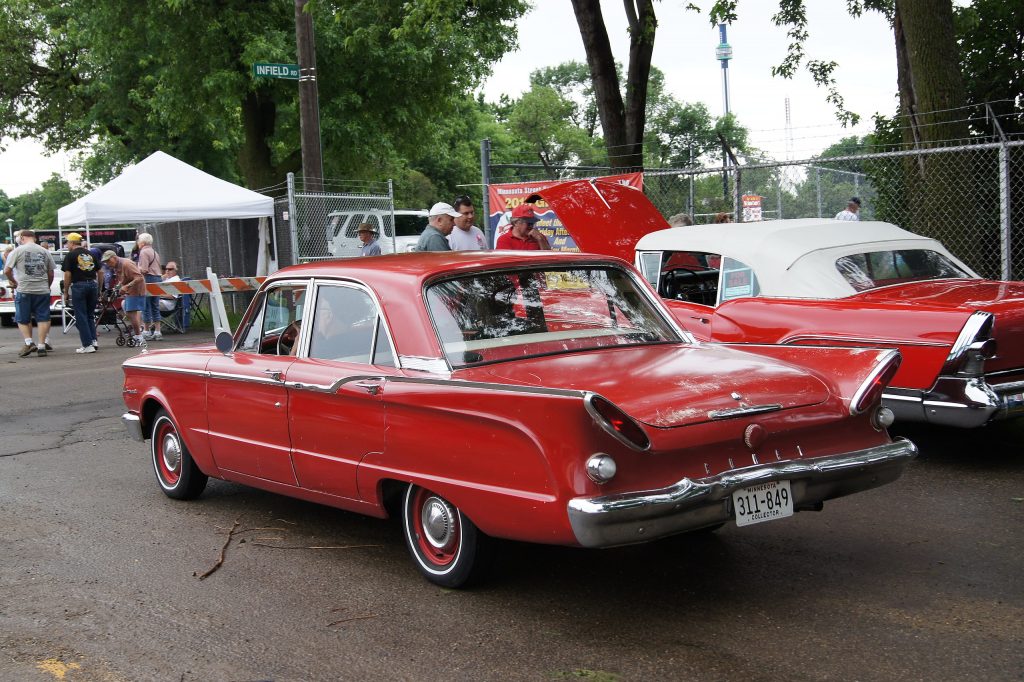
1960-1963 Mercury Comet Technical Specifications
| Model Years | Engine | Horsepower | Torque |
| 1960 | 144.3 cid I6 (1bbl) | 90 horsepower | 138 lb-ft |
| 1961-1963 | 144.3 cid I6 (1bbl) | 85 horsepower | 138 lb-ft |
| 1961-1963 | 170 cid I6 (1bbl) | 101 horsepower | 156 lb-ft |
| 1963 | 260 cid V8 (2bbl) | 164 horsepower | 258 lb-ft |
1960-1963 Engines and Performance
For the 1960 Mercury Comet, Ford made just one engine available: A 90 horsepower, single-carb, 144 cid inline-six, which they called the Thrift-Power 6. According to their brochures, the Thrift-Power 6 had an “Advanced ultra-short piston stroke… Wedge-type combustion chambers; free-turning intake and exhaust valves… [and] up to 25 miles on every gallon!” For transmissions, buyers could get either the “Comet Drive” 2-speed automatic or a three-speed manual
In 1961, the Comet S-22 coupe got the more powerful (and larger) Thrift-Power 170, which was a 170 cid inline-six that produced 101 horsepower. This was good for “11% faster highway passing, [and] 22% better acceleration on hills.”
For the 1963 Mercury Comet, the new 260 cid V8 with a two-barrel carburetor was an option. This made 164 horsepower, and was the first V8 Mercury put in the Comet. Ford called it the Challenger V8, and also put it inside the brand new Mustang in 1964.
1960-1963 Mercury Comet Production Numbers
| Model Year | Bodystyle | Production Total |
| 1960 | Four-Door Sedan | 47,416 |
| Two-Door Station Wagon | 5,115 | |
| Two-Door Sedan | 45,374 | |
| Four-Door Station Wagon | 18,426 | |
| 1960 Total | 116,331 | |
| 1961 | Four-Door Sedan | 85,332 |
| Two-Door Station Wagon | 4,199 | |
| Two-Door Sedan | 71,563 | |
| Four-Door Station Wagon | 22,165 | |
| S-22 Sedan | 14,004 | |
| 1961 Total | 197,263 | |
| 1962 | Four-Door Sedan | 70,227 |
| Two-Door Station Wagon | 2,121 | |
| Two-Door Sedan | 73,800 | |
| Four-Door Station Wagon | 16,759 | |
| 1962 Total | 162,907 | |
| 1963 | Comet | 53,623 |
| Comet Custom | 63,133 | |
| S-22 Sedan | 6,303 | |
| S-22 Coupe | 5,807 | |
| S-22 Convertible | 5,757 | |
| 1963 Total | 134,623 |
1964-1965 Mercury Cyclone & Mercury Comet
The second generation of the Mercury Comet and first generation of the Cyclone lasted from 1964–1965. The Comet did not look radically different than before, but lost the slant on the tail lights, became more square, and got a new front-grille similar to the Lincoln Continental. Mercury had four levels of the Comet available in 1964: The Comet 202, Comet 404, Comet Caliente, and Comet Cyclone – the latter of which replaced the Comet S-22 as the high performance variant.
The Cyclone was only available as a two-door hardtop, and Mercury made it clear they built it for performance. It had black vinyl on the instrument panel, a 3-spoke steering wheel, distinctive wheel covers, and the “Cyclone Super 289 V8.” The most powerful of the 289s inside the Cyclone was the K-code that made 271 horsepower and was also in the Mustang. These were only available from some dealers through special order, and the factory 289 V8 options were 210 horsepower for 1964 and 225 horsepower for 1965.
Supposedly, Mercury ran the Cyclone Super 289s for 100,000 miles at 105 mph in the Daytona Durability Run. This was to prove how tough they were and put customer’s minds at ease about performance. Available transmissions were three-speed or four-speed fully-synchronized manuals or the Merc-O-Matic automatic.
A very limited number of Cyclones got the legendary 427 cid dual-carb V8 producing 425 horsepower and 480 lb-ft of torque. These were race only cars that were blistering fast and special order only. On the low-end, standard Comet buyers could get the 170 or 200 cid inline-six engines, which made around 100 horsepower.
1964-1965 Mercury Cyclone & Comet Technical Specifications
| Model Years | Engine | Horsepower | Torque |
| 1964 | 170 cid I6 (1bbl) | 101 horsepower | 156 lb-ft |
| 1964 | 200 cid I6 (1bbl) | 116 horsepower | 175 lb-ft |
| 1964 | 260 cid V8 (2bbl) | 164 horsepower | 258 lb-ft |
| 1964 | 289 cid V8 (4bbl) | 210 horsepower | 300 lb-ft |
| 1964-1965 | 289 cid V8 (4bbl) | 271 horsepower | 312 lb-ft |
| 1964-1965 | 427 cid V8 (2x4bbl) | 425 horsepower | 480 lb-ft |
| 1965 | 200 cid I6 (1bbl) | 120 horsepower | 190 lb-ft |
| 1965 | 289 cid V8 (2bbl) | 200 horsepower | 282 lb-ft |
| 1965 | 289 cid V8 (4bbl) | 225 horsepower | 305 lb-ft |
1964-1965 Mercury Cyclone & Comet Production Numbers
| Model Year | Bodystyle | Production Total |
| 1964 | Comet 202 | 68,475 |
| Comet 404 | 46,546 | |
| Comet Caliente | 67,461 | |
| Comet Cyclone | 7,454 | |
| 1964 Total | 189,936 | |
| 1965 | Comet 202 | 60,740 |
| Comet 404 | 36,346 | |
| Comet Caliente | 55,619 | |
| Comet Cyclone | 12,347 | |
| 1965 Total | 165,052 |
1966-1967 Mercury Comet & Mercury Cyclone
The Mercury Comet and Cyclone returned for a fourth and third generation, respectively, for 1966–1967. They featured a new redesign, and Mercury swapped it from the Ford Falcon to the Ford Fairlane shell. This made the Comet no longer a compact, but it was not really considered an intermediate.
There were six different trims available for the Comet: The base Comet 202, Comet Capri, Comet Caliente, Comet Station Wagon, Comet Cyclone, and Comet Cyclone GT. However, for the 1967 Mercury Comet, only the Comet name was attached to the 202, Station Wagon, and Cyclone, as the others became stand alone versions.
Engine-wise, the 1966 Comet kept the single-carb 200 cid inline-six, and also got the Super Cyclone 289 V8 as an option, making 200 horsepower now. However, the big news was Mercury’s introduction of the 390 cid V8 for the Cyclone GT. The 390 V8 produced 335 horsepower with a four-barrel carb.
Buyers could have it with either a three-speed manual, four-speed manual, or Merc-O-Matic automatic. Mercury branded those equipped with the Merc-O-Matic the Cyclone GTA. It could run the ¼ mile in the high 14s and go from zero to 60 mph in 7 seconds.
For the 1967 Mercury Cyclone, the Cyclone GT was no longer its own model and the GT became a Cyclone option. Ford still had the 390 V8 available, though in a lower compression 270 horsepower or a 320 horsepower version. Once again, Mercury still offered the 427 cid race engine as an option, with 425 horsepower on demand.
1966-1967 Mercury Cyclone & Comet Technical Specifications
| Model Years | Engine | Horsepower | Torque |
| 1966-1967 | 200 cid I6 (1bbl) | 120 horsepower | 190 lb-ft |
| 1966-1967 | 289 cid V8 (2bbl) | 200 horsepower | 282 lb-ft |
| 1966-1967 | 427 cid V8 (2x4bbl) | 425 horsepower | 480 lb-ft |
| 1966 | 390 cid V8 (4bbl) | 275 horsepower | 405 lb-ft |
| 1966 | 390 cid V8 (4bbl) | 335 horsepower | 427 lb-ft |
| 1967 | 390 cid V8 (4bbl) | 270 horsepower | 403 lb-ft |
| 1967 | 390 cid V8 (4bbl) | 320 horsepower | 427 lb-ft |
1966-1967 Mercury Cyclone & Comet Production Numbers
| Model Year | Bodystyle | Production Total |
| 1966 | Comet 202 | 56,404 |
| Comet Capri | 30,666 | |
| Comet Caliente | 47,717 | |
| Comet Station Wagon | 11,475 | |
| Comet Cyclone | 8,194 | |
| Comet Cyclone GT | 15,970 | |
| 1966 Total | 170,426 | |
| 1967 | Comet 202 | 24,532 |
| Cyclone | 6,910 | |
| 1967 Total | 31,442 |
1968-1969 Mercury Comet & Mercury Cyclone
The Mercury Comet and Cyclone returned for a fifth and fourth generation, respectively, from 1968–1969. Starting in 1968, the Cyclone became its own standalone model when Mercury dropped the Comet modifier. Both bodies were still modeled on the Ford Fairlane like before, and had the same 116 inch wheelbase.
The Cyclones had a tape stripe along the side, and Cyclone GTs had an upper body level racing stripe to distinguish it. New for the 1968 Mercury Cyclone was a fastback option. That year, Mercury still had the 390 V8 as an option, but now introduced the 302 V8 with either a dual or quad-barrel carburetor. Once again, the 390 V8 produced 335 horsepower in the top trim, while the 302 made a max of 230 horsepower.
Ford introduced the 428 Cobra Jet for 1968, producing 335 horsepower. That was still dwarfed by the 427, now with a single quad-barrel carb, making 390 horsepower. However, most people think the 428 CJ actually made closer to 400+ horsepower and Ford underrated it for insurance affordability.
The 1969 Mercury Cyclone CJ and Spoiler II
For the 1969 Mercury Cyclone, Mercury made some big improvements. The GT was now just an appearance option, and all new was the Cyclone CJ and or SCJ. The 1969 Mercury Cyclone CJ had a blacked out grille, dual exhausts, competition handling package, and of course, the new 428 Cobra Jet V8. Also available was the 428 Super Cobra Jet, which made the same power but had stronger internals for the drag strip.
While it wasn’t the fastest, the hottest Cyclone was the (also) new Mercury Cyclone Spoiler II. Ford created the Spoiler II specifically to compete at NASCAR. Their engineers found it was faster than the Fairlane, due to its fastback body style, and it won the Daytona 500 in February 1968. There was supposed to be a 428 Cobra Jet with a Ram Air option inside the production version, but instead it got the 351 V8 Windsor V8 making 250–290 horsepower.
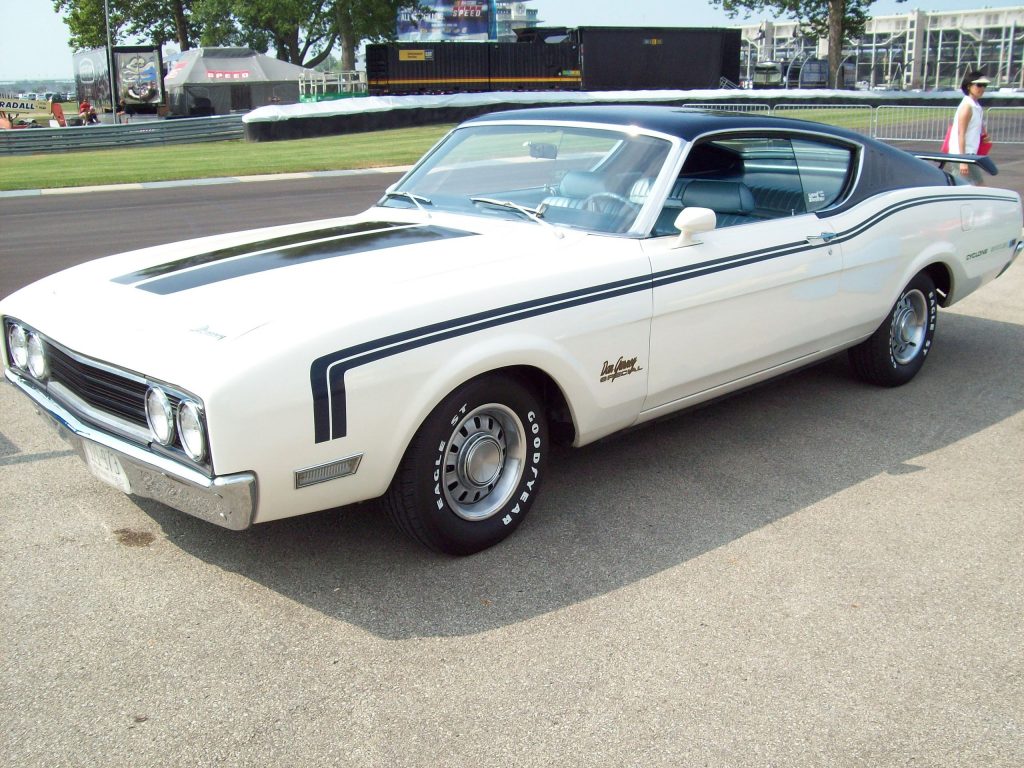
1968-1969 Mercury Cyclone & Comet Technical Specifications
| Model Years | Engine | Horsepower | Torque |
| 1968 | 200 cid I6 (1bbl) | 115 horsepower | 190 lb-ft |
| 1968 | 302 cid V8 (2bbl) | 210 horsepower | 295 lb-ft |
| 1968 | 302 cid V8 (4bbl) | 230 horsepower | 310 lb-ft |
| 1968 | 390 cid V8 (2bbl) | 265 horsepower | 390 lb-ft |
| 1968 | 390 cid V8 (4bbl) | 335 horsepower | 427 lb-ft |
| 1968-1969 | 428 cid V8 (4bbl) Cobra Jet | 335 horsepower | 445 lb-ft |
| 1968-1969 | 427 cid V8 (4bbl) | 390 horsepower | 460 lb-ft |
| 1969 | 250 cid I6 (1bbl) | 155 horsepower | 240 lb-ft |
| 1969 | 302 cid V8 (4bbl) | 220 horsepower | 300 lb-ft |
| 1969 | 351 cid V8 (2bbl) | 250 horsepower | 355 lb-ft |
| 1969 | 351 cid V8 (4bbl) | 290 horsepower | 385 lb-ft |
| 1969 | 390 cid V8 (4bbl) | 320 horsepower | 427 lb-ft |
1968-1969 Mercury Comet & Cyclone Production Numbers
| Model Year | Bodystyle | Production Total |
| 1968 | Comet | 16,693 |
| Cyclone | 13,628 | |
| 1968 Total | 30,321 | |
| 1969 | Comet | 14,104 |
| Cyclone | 5,882 | |
| Cyclone CJ | 3,261 | |
| 1969 Total | 23,247 |
1970-1971 Mercury Cyclone
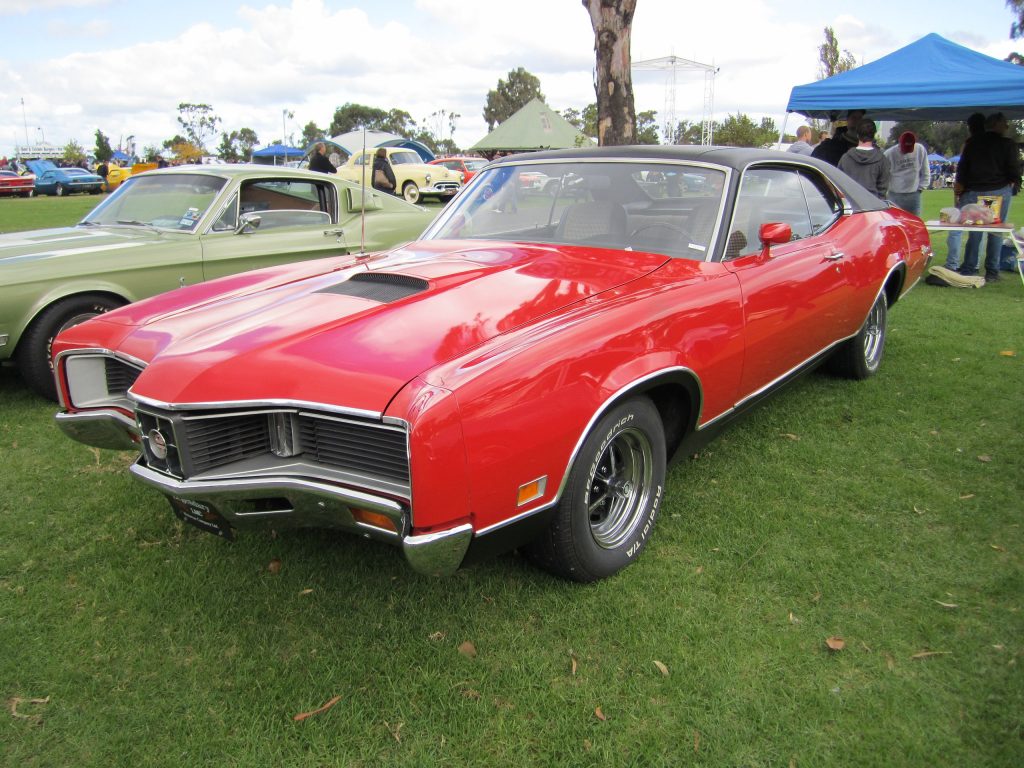
The final generation of the Mercury Cyclone lasted from 1970–1971. It got bigger, sitting on a new 117 inch wheelbase, but got almost 7 inches longer due to the new extended front bumper design. Available models were the Cyclone, Cyclone GT, and Cyclone Spoiler, as the CJ was no longer a separate model.
The Cyclone GT, originally introduced as the highest performance Cyclone, was now powered with the 351 V8 making only 250 horsepower. The 1970 Cyclone Spoiler had a new 429 V8 rated at 360 horsepower, as well as a Hurst Shifter for the four-speed manual. It had a tachometer that went up to 8,000 rpm, and the red line could be manually adjusted.
Ford dropped the 428 Cobra Jet and 427 V8, with the 429 being available in three flavors. Either 360–370 horsepower in the Cobra Jet, or 375 horsepower with the Super Cobra Jet.
After 1971, Mercury dropped the Cyclone as a standalone model. It was still available as an option for the Montego for 1972, but Ford completely discontinued it after. With buyers opting for more fuel efficient vehicles, muscle cars were already struggling to sell. The emissions crunch conspired to reduce all performance, making them snails from 1972-on in most cases.
Luckily, the Cyclone did not have to suffer the indignity, as Mercury discontinued it rather than neuter it. Today, Cyclones, GTs, Spoilers, and CJs are some of the most sought out collectors cars of the muscle car era. Due to their high production volume of the Comet, they are still widely available on the collector’s market. The Cyclones are a bit more rare, but can still be found widely.
1970-1971 Mercury Cyclone Technical Specifications
| Model Years | Engine | Horsepower | Torque |
| 1970 | 351 cid V8 (2bbl) | 220 horsepower | 300 lb-ft |
| 1970 | 351 cid V8 (2bbl) | 250 horsepower | 355 lb-ft |
| 1970 | 351 cid V8 (2bbl) | 300 horsepower | 380 lb-ft |
| 1970 | 429 cid V8 (4bbl) | 360 horsepower | 480 lb-ft |
| 1970-1971 | 429 cid V8 (4bbl) | 370 horsepower | 450 lb-ft |
| 1970-1971 | 429 cid V8 (4bbl) | 375 horsepower | 450 lb-ft |
| 1971 | 351 cid V8 (2bbl) | 240 horsepower | 350 lb-ft |
| 1971 | 351 cid V8 (2bbl) | 285 horsepower | 370 lb-ft |
1970-1971 Mercury Cyclone Production Numbers
| Model Year | Bodystyle | Production Total |
| 1970 | Cyclone | 1,695 |
| Cyclone GT | 10,170 | |
| Cyclone Spoiler | 1,631 | |
| 1970 Total | 13,496 | |
| 1971 | Cyclone | 444 |
| Cyclone GT | 2,287 | |
| Cyclone Spoiler | 353 | |
| 1971 Total | 3,084 |
1971-1977 Mercury Comet
Mercury dropped the Comet for the 1970 model year, but returned it for a fifth and final generation from 1971–1977. Mercury switched the platform from the Ford Fairlane to the Ford Maverick. However, the Comet version used different taillights, hood, grille, and badging to distinguish it. Due to the Cyclone being a separate model, Mercury created the Comet GT from 1971–1975 as the muscle car version of the Comet.
Sales were actually pretty good for the Comet during the early-1970s, but came crashing down after a high water mark in 1974. With the exception of the 302 V8 in 1971 that made 210 horsepower, performance was practically gone. Mercury used an array of 200 and 250 cid inline-sixes, as well as the 302 V8, but nothing broke 140 horsepower.
Mercury discontinued the Comet after 1977, due to declining sales and enthusiasm. By then, it barely resembled the 1960 compact version, and sold worse too. From compact economy car, to intermediate muscle car, back to a restyled compact economy car, the Comet’s journey had come full circle.
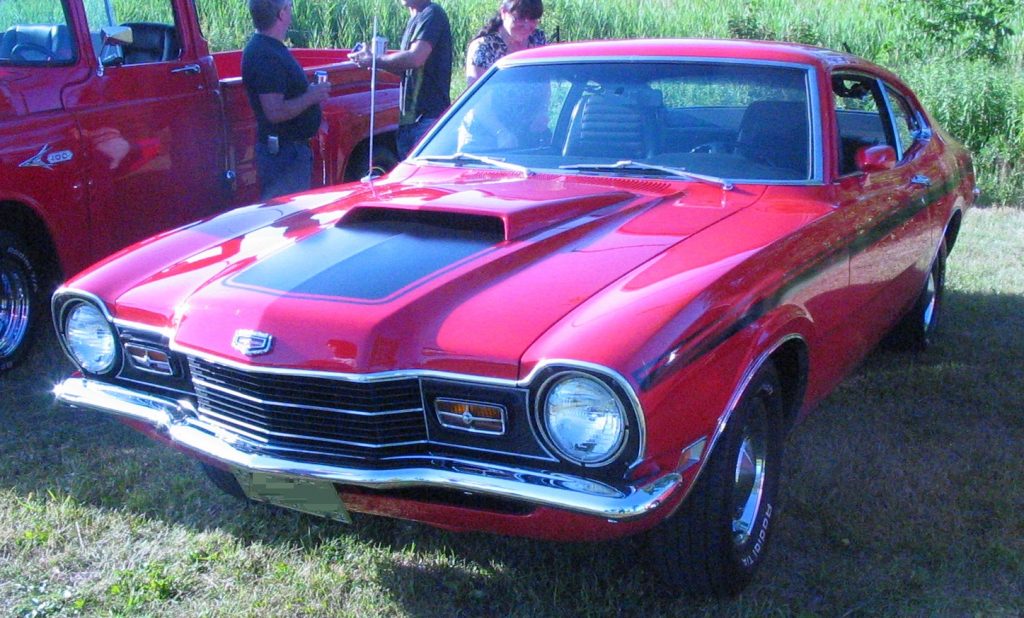
1971-1977 Mercury Comet Technical Specifications
| Model Years | Engine | Horsepower | Torque |
| 1971 | 170 cid I6 (1bbl) | 100 horsepower | 148 lb-ft |
| 1971 | 200 cid I6 (1bbl) | 115 horsepower | 180 lb-ft |
| 1971 | 200 cid I6 (1bbl) | 155 horsepower | 230 lb-ft |
| 1971 | 302 cid V8 (2bbl) | 210 horsepower | 295 lb-ft |
| 1972 | 170 cid I6 (1bbl) | 82 horsepower | 129 lb-ft |
| 1972 | 200 cid I6 (1bbl) | 91 horsepower | 154 lb-ft |
| 1972 | 250 cid I6 (1bbl) | 98 horsepower | 183 lb-ft |
| 1972-1973 | 302 cid V8 (2bbl) | 138 horsepower | 235 lb-ft |
| 1973 | 200 cid I6 (1bbl) | 84 horsepower | 150 lb-ft |
| 1973 | 250 cid I6 (1bbl) | 88 horsepower | 196 lb-ft |
| 1974-1975 | 250 cid I6 (1bbl) | 91 horsepower | 190 lb-ft |
| 1974-1975 | 302 cid V8 (2bbl) | 140 horsepower | 230 lb-ft |
| 1975 | 200 cid I6 (1bbl) | 75 horsepower | 145 lb-ft |
| 1976 | 200 cid I6 (1bbl) | 81 horsepower | 151 lb-ft |
| 1976 | 250 cid I6 (1bbl) | 90 horsepower | 150 lb-ft |
| 1976-1977 | 302 cid V8 (2bbl) | 138 horsepower | 145 lb-ft |
| 1977 | 200 cid I6 (1bbl) | 96 horsepower | 151 lb-ft |
| 1977 | 250 cid I6 (1bbl) | 98 horsepower | 152 lb-ft |
1971-1977 Mercury Comet Production Numbers
| Model Year | Bodystyle | Production Total |
| 1971 | Comet | 83,000 |
| 1972 | Four-Door Sedan | 29,092 |
| Two-Door Sedan | 53,267 | |
| 1972 Total | 82,359 | |
| 1973 | Four-Door Sedan | 28,984 |
| Two-Door Sedan | 55,707 | |
| 1973 Total | 84,691 | |
| 1974 | Four-Door Sedan | 60,944 |
| Two-Door Sedan | 64,751 | |
| 1974 Total | 125,695 | |
| 1975 | Four-Door Sedan | 31,080 |
| Two-Door Sedan | 22,768 | |
| 1975 Total | 53,848 | |
| 1976 | Four-Door Sedan | 21,006 |
| Two-Door Sedan | 15,068 | |
| 1976 Total | 36,074 | |
| 1977 | Four-Door Sedan | 12,436 |
| Two-Door Sedan | 9,109 | |
| 1977 Total | 21,545 |
Mercury Comet & Mercury Cyclone FAQ
Mercury produced the Mercury Cyclone from 1964–1971, and it is decently rare today. Under 100,000 versions were built, making it much rarer than similar Ford Mustangs.
Mercury built the Cyclone from 1964–1971. Mercury built the Comet from 1960–1977, and based the Cyclone on the Comet.
The base model engine in the 1970 Mercury Cyclone GT was a 351 cid Windsor V8 that made 250 horsepower. Optional engines included a 351 V8 at 300 horsepower, and three 429 Cobra Jet V8s at 360–375 horsepower.
The least powerful Mercury Cyclone model was the 1964 Cyclone that made 210 horsepower.
Mercury based the Comet and Cyclone on the Ford Falcon (1960–1965), Ford Fairlane (1966–1971), and Ford Maverick (1972–1977).
Mercury made the Cyclone for 8 model years from 1964–1971.

